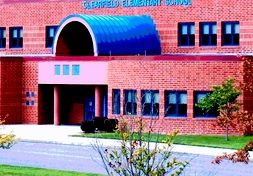CLEARFIELD – The Clearfield Area School District Board of Directors reviewed a list of retirements and proposed academic setting changes during Monday night’s committee meetings.
In January, the district approved an early retirement incentive. The purpose was two-fold to create a savings for the district and also to help with the realignment of staff with the upcoming school building consolidation.
The district has embarked upon a $36 million expansion and renovation of the Clearfield Area High School and a $10.6 million expansion and renovation of the Clearfield Elementary School.
The district has voted to permanently close the Clearfield Area Middle School and to convert the CAHS into a 7-12 campus. The district has also voted to permanently close Girard-Goshen, Centre and Bradford Township Elementary Schools and to convert the CES into a K-6 campus.
On Monday night, the district announced it had received resignations for approval from employees who want to take advantage of the retirement incentive. The employees included: Alan Murphy, Dan Kennedy, Bonnie Boyce, Cindy Collins, Forrest Campman, Dana Greiner, Mary Hindman, Paul Jefferies, Vickie Morgan, Sarah Laux, Kathryn Cillo, Donna Moore, Nannette Rougeux, Brenda Bowes, Beth Helsel, Melody Read, Joy Lhota, Virginia Spencer, Pam Pagnotto, Rebecca Short, Dennis Zelenky, Margaret Hand and Michael Gill, all effective at the end of the school year.
Other retirements to be approved are Cathy Sones (end of the school year) and Sue Rumfola, Pat Partash, Lynne Peacock, Carol Emigh and Debbie Rickard on dates to be determined. Also retirements to be approved are Mary Curry, effective April 11, and Judy Merritts on June 30. Non-bargaining retirements for approval are Rose Leavy, Dealyn Taylor and Kathy Luzier on dates to be determined.
The district had a higher number of retirements than usual due to the retirement incentive, said Sam Maney, business administrator. Superintendent Terry Struble said employees have until Friday to take advantage of the retirement incentive, so the list to be approved could grow before next Monday’s regular meeting.
He noted that the employees who haven’t selected a retirement date will help the district with the transition process with the new employees coming in.
When asked, Struble indicated the district will have 185 professional staff members next school year with 183 positions being a full-time equivalent. He said the district hasn’t made any decisions so far as the secretarial and janitorial staff.
During the meeting, Struble also proposed academic setting changes in reading, mathematics, science, information technology and foreign languages. So far as reading, he said it is clear students need to be able to read at level by the third grade.
Kindergarten through the third grade, he said, would see on average two Title 1 Reading teachers dedicated to each grade. These positions, he said, would be free to move between the grades as needs arise. In the fourth grade, he said a position would still be available through Title 1, but it would also support the non-public school settings as required.
According to Struble, the fourth through sixth grades would be covered by two teachers to focus on reading comprehension strategies for students. This, he said, would be a recovery program to help students understand what they are reading.
The seventh and eighth grades, he said, would have a one-hour block of English Language Arts. He said there are currently separate reading and English classes at the seventh grade level, while the eighth grade only has English and some students assigned to Reading 180.
The English block, Struble said, would allow for the integration of the reading and English instead of treating them as separate subjects. The ninth grade would maintain its literature course, he said.
In mathematics, he said the district would maintain Title 1 support and the courses at the CAHS. In addition, he said the seventh and eighth mathematics courses would become one-hour blocks to help provide the appropriate time to develop the early algebra skills in students.
In science, all ninth grade students would complete biology with laboratory time. The 10th grade would also have a biochemistry course for those students not yet proficient in biology and who need additional instruction that would integrate a chemistry component, said Struble.
In information sciences, he said second grade students would start with a computer class once-a-week. The class would be taught by a certified computer teacher. These classes, he said, would continue once-a-week through the sixth grade. In the seventh and eighth grades, he said students would have a semester equivalent course to learn proper keyboarding and to finalize their computer skills for the ninth grade.
Junior high students, Struble said, would have an exploratory foreign language class in the seventh and eighth grades. He said it would consist of one year of Spanish and the other year would be French or German based upon the available applicants.
